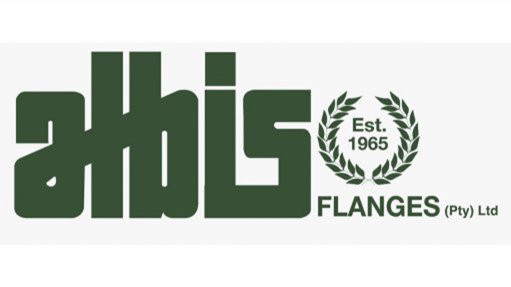DRMSA to deliver interim DRM trial results to Icasa next week
South Africa is progressing its ambitions of transitioning from analogue to digital radio broadcasting as two 12-month-long trials make headway in efforts to establish a starting base to keep radio relevant in a digital age.
The trials evaluating the DRM and DAB+ standards, both of which were started last year, were nearing conclusion in May and October respectively and marked a milestone towards the reality of digital radio in South Africa.
In July, the Digital Radio Mondiale Southern Africa (DRMSA) consortium, in partnership with Christian radio station Radio Pulpit, pioneered the first DRM trial in South Africa, taking what Pulpit Media group MD Dr Roelf Petersen deemed the “road less travelled” with regards to standard adoption.
By next week, the consortium would provide the Independent Communications Authority of South Africa (Icasa) with the interim joint technical detail report that had emerged from the outcomes of the trial, he told delegates at the Southern African Digital Broadcasting Association- (Sadiba-) hosted Digital Broadcasting Now conference on Friday.
Following the conclusion of the trial, Radio Pulpit would apply to Icasa for a digital broadcasting licence to kick off its year-long migration from its current AM band next year.
The International Telecommunications Union-endorsed DRM standard comprised two modes, namely DRM30, which was mainly used for large-area and international coverage and intended for AM broadcasts on short, medium and long wave up to 30 MHz, and the DRM+, which served the spectrum above 30 MHz and included the VHF band III for local and regional coverage.
The DRMSA-led trial was based on a DRM30 configuration designed to operate alongside AM broadcast frequency bands, using Radio Pulpit’s 25 kW DRM-ready transmitter and a 24 m low-profile antenna, based in Kameeldrift, Pretoria, to broadcast 10 kW on a medium wave AM 1 440 kHz frequency.
After the trial, signal distributer Sentech, which had partnered with the consortium to test equipment and share expertise, would consider installing a low-profile antenna at the Kameeldrift site, while the 25 kW transmitter, which was imported in 2014 for trial use, would be installed at the broadcaster’s Western Cape studio.
Radio Pulpit had another 50 kW unit based in Meyerton on standby for the imminent commercialisation of digital radio.
Meanwhile, a Sadiba- and National Association of Broadcasters- (NAB-) led working group, headed by Dave Cherry, in November kicked off a DAB+ trial using two 10 kW transmitting stations operating as a single-frequency network in Johannesburg and Pretoria to assess the potential replacement for the current AM and FM bands.
Cherry explained that the trial aimed to establish the parameters of the DAB+ standard, test and evaluate the related technology, examine end-to-end technical functionality and analyse vehicle and building penetration loss and clutter on coverage, as well as field test typical consumer equipment, besides others.
The high-powered DAB+ transmission trial allowed the rotational distribution of up to 40 radio services from the public, commercial and community sectors across a 21 185 km2 area, covering 21.5% of South Africa’s population.
Sentech technology executive Leago Takalani said the digital trial aimed to review current technology developments, standards, regulations and reports, while developing a roadmap for regulatory frameworks and commercial and go-to-market models.
However, despite the trials and the expected benefits of digital radio, traditional analogue radio would remain the dominant platform in South Africa for the foreseeable future.
A recent NAB report titled 'The State of Broadcasting in South Africa' indicated that, amid South Africa’s more urgent transition to digital terrestrial television, stakeholders were not “as aggressive” in turning off FM signals, particularly as FM radio offered reliable sound.
The transition to digital radio would not likely become a national priority until television had fully migrated to digital broadcasting, which would offer many more interactive high-definition channels.
However, radio far outstripped the reach of television, which covered about 20-million people.
Ninety-three per cent of South Africa’s 14.5-million households, representing about 37-million people, listened to the radio broadcasts of about 200 community radio stations and 38 commercial broadcasters over existing AM and FM sound broadcasting bands.
“As broadband and smartphones remain out of reach for many South Africans, radio will continue to play an important role in entertaining and engaging with those sections of the population who might otherwise be excluded from mainstream media,” the report stated.
Article Enquiry
Email Article
Save Article
Feedback
To advertise email advertising@creamermedia.co.za or click here
Comments
Press Office
Announcements
What's On
Subscribe to improve your user experience...
Option 1 (equivalent of R125 a month):
Receive a weekly copy of Creamer Media's Engineering News & Mining Weekly magazine
(print copy for those in South Africa and e-magazine for those outside of South Africa)
Receive daily email newsletters
Access to full search results
Access archive of magazine back copies
Access to Projects in Progress
Access to ONE Research Report of your choice in PDF format
Option 2 (equivalent of R375 a month):
All benefits from Option 1
PLUS
Access to Creamer Media's Research Channel Africa for ALL Research Reports, in PDF format, on various industrial and mining sectors
including Electricity; Water; Energy Transition; Hydrogen; Roads, Rail and Ports; Coal; Gold; Platinum; Battery Metals; etc.
Already a subscriber?
Forgotten your password?
Receive weekly copy of Creamer Media's Engineering News & Mining Weekly magazine (print copy for those in South Africa and e-magazine for those outside of South Africa)
➕
Recieve daily email newsletters
➕
Access to full search results
➕
Access archive of magazine back copies
➕
Access to Projects in Progress
➕
Access to ONE Research Report of your choice in PDF format
RESEARCH CHANNEL AFRICA
R4500 (equivalent of R375 a month)
SUBSCRIBEAll benefits from Option 1
➕
Access to Creamer Media's Research Channel Africa for ALL Research Reports on various industrial and mining sectors, in PDF format, including on:
Electricity
➕
Water
➕
Energy Transition
➕
Hydrogen
➕
Roads, Rail and Ports
➕
Coal
➕
Gold
➕
Platinum
➕
Battery Metals
➕
etc.
Receive all benefits from Option 1 or Option 2 delivered to numerous people at your company
➕
Multiple User names and Passwords for simultaneous log-ins
➕
Intranet integration access to all in your organisation

















